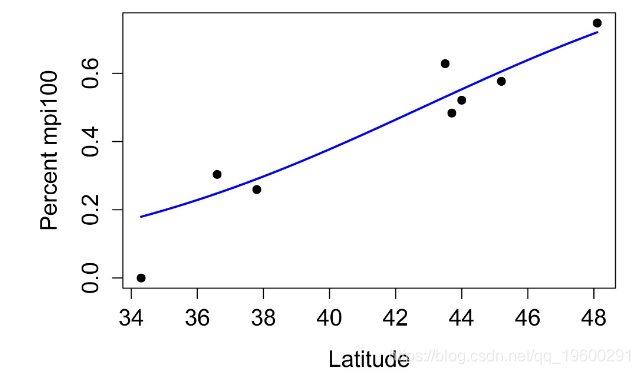原文链接:http://tecdat.cn/?p=9589
目录
怎么做测试
Logistic回归可以使用glm (广义线性模型)函数在R中执行 。该函数使用链接函数来确定要使用哪种模型,例如逻辑模型,概率模型或泊松模型。
假设条件
广义线性模型的假设少于大多数常见的参数检验。观测值仍然需要独立,并且需要指定正确的链接函数。因此,例如应该了解何时使用泊松回归以及何时使用逻辑回归。但是,不需要数据或残差的正态分布。
并非所有比例或计数都适用于逻辑回归分析
一个不采用逻辑回归的例子中,饮食研究中人们减肥的体重无法用初始体重的比例来解释作为“成功”和“失败”的计数。在这里,只要满足模型假设,就可以使用常用的参数方法。
过度分散
使用广义线性模型时要注意的一个潜在问题是过度分散。当模型的残余偏差相对于残余自由度较高时,就会发生这种情况。这基本上表明该模型不能很好地拟合数据。
但是据我了解,从技术上讲,过度分散对于简单的逻辑回归而言不是问题,即具有二项式因果关系和单个连续自变量的问题。
伪R平方
对于广义线性模型(glm),R不产生r平方值。pscl 包中的 pR2 可以产生伪R平方值。
测试p值
检验逻辑对数或泊松回归的p值使用卡方检验。方差分析 来测试每一个系数的显着性。似然比检验也可以用来检验整体模型的重要性。
Logistic回归示例
模型拟合
系数和指数系数
方差分析
伪R平方
模型的整体p值
标准化残差图
标准化残差与预测值的关系图。残差应无偏且均等。
绘制模型
Logistic回归示例
模型拟合
系数和指数系数
方差分析
伪R平方
模型的整体p值
标准化残差图
绘制模型
Logistic回归示例
将因子转换为数字变量,级别为0和1
将Factor转换为逻辑变量,级别为TRUE和FALSE







